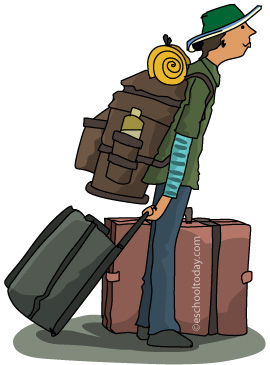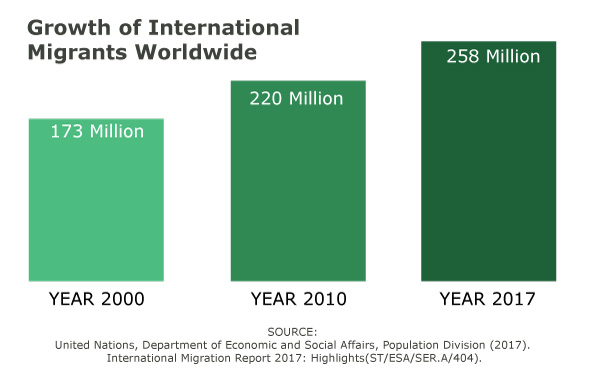- Migration
What is Migration?
It is the movement of a person or a group of people to settle in another place, often across a political or administrative boundary. Migration can be temporal or permanent, and it may be voluntary or forced. It is good to know that migration is not exclusive to humans. Animals migrate too.
“There are 232million people living outside their country of birth, including myself. All of us are part of a productive global economy that benefits our world as a whole” —Ban Ki-Moon, Former UN Secretary-General
 Two important terms that relate to migration:
Two important terms that relate to migration:
Immigration (people coming in from elsewhere) and Emigration (people leaving their home country). Immigration is when people move from other places into a place to settle. Such migrants are called immigrants. Emigration is when people move out to new places, and the migrants involved are called emigrants.
Migration is not a new thing — it is known, historically, that people have always had migratory lifestyles. There is enough evidence that people have moved from far away places to inhabit new areas. For example, Migrants from Asia ended up in North and South America over some time, via a land bridge over the Bering Strait. There have been several bulk movements of people in the history of humans, all of which were caused by some specific events during those times.
In more recent years, such as the Industrial revolution period (1843-1939), over 50 million people left Europe for the USA, Canada, Argentina, Australia, New Zealand, and South Africa. Many of them migrated to escape poverty and periodic crop failures in Europe.
In more recent years, international migration is on the rise. A UN study reports that over 60% of all international migrants live in Asia (80 million) or Europe (78 million). Northern America hosted the third-largest number of international migrants (58 million), followed by Africa (25 million), Latin America and the Caribbean (10 million), and Oceania (8 million).

The concept is very similar today. People find it easier to move because of the availability of efficient transport, way-finding technology, improved communications, media, and information, even though new policies, laws, and controls in entry points are much more rigorous than ever before.
